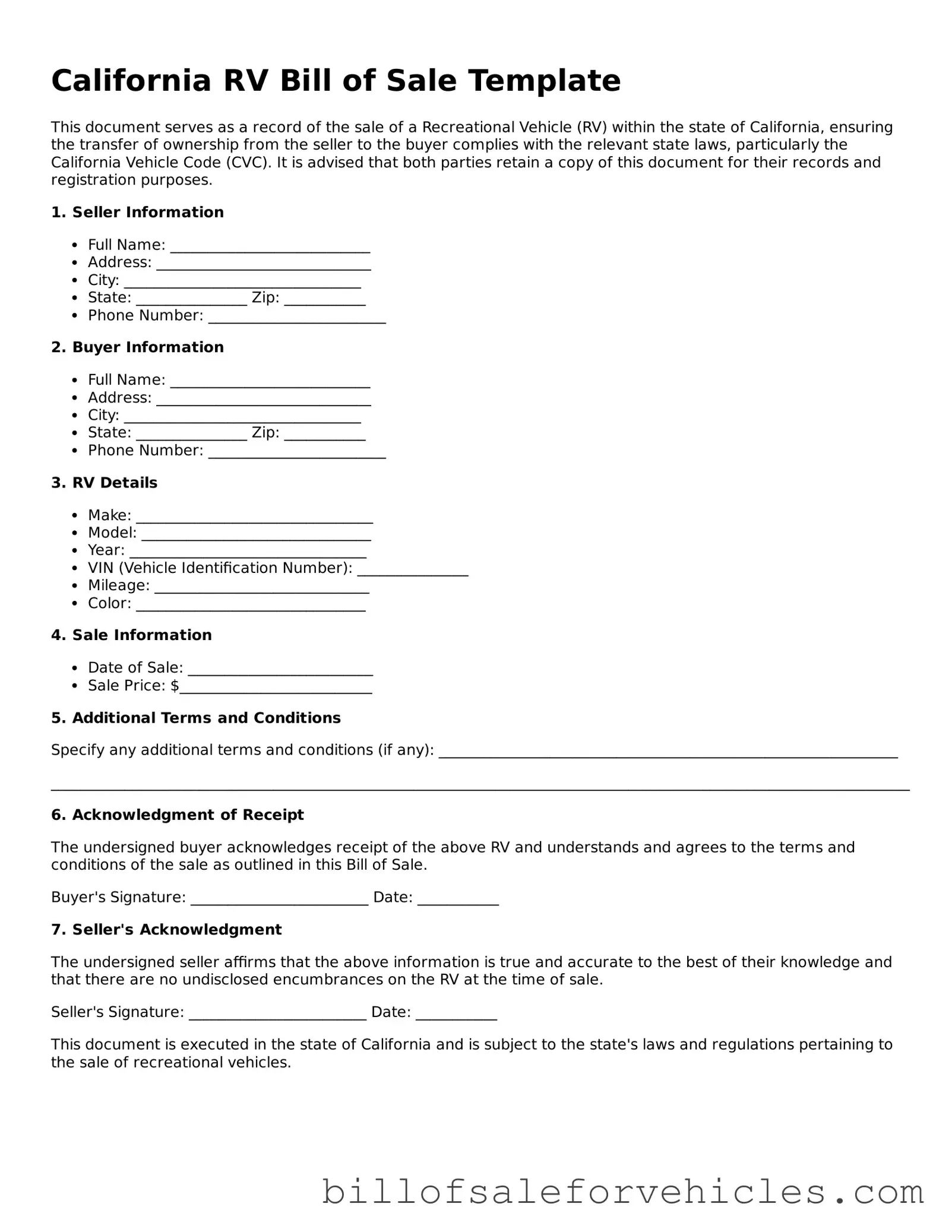California RV Bill of Sale Template
This document serves as a record of the sale of a Recreational Vehicle (RV) within the state of California, ensuring the transfer of ownership from the seller to the buyer complies with the relevant state laws, particularly the California Vehicle Code (CVC). It is advised that both parties retain a copy of this document for their records and registration purposes.
1. Seller Information
- Full Name: ___________________________
- Address: _____________________________
- City: ________________________________
- State: _______________ Zip: ___________
- Phone Number: ________________________
2. Buyer Information
- Full Name: ___________________________
- Address: _____________________________
- City: ________________________________
- State: _______________ Zip: ___________
- Phone Number: ________________________
3. RV Details
- Make: ________________________________
- Model: _______________________________
- Year: ________________________________
- VIN (Vehicle Identification Number): _______________
- Mileage: _____________________________
- Color: _______________________________
4. Sale Information
- Date of Sale: _________________________
- Sale Price: $__________________________
5. Additional Terms and Conditions
Specify any additional terms and conditions (if any): ______________________________________________________________
____________________________________________________________________________________________________________________
6. Acknowledgment of Receipt
The undersigned buyer acknowledges receipt of the above RV and understands and agrees to the terms and conditions of the sale as outlined in this Bill of Sale.
Buyer's Signature: ________________________ Date: ___________
7. Seller's Acknowledgment
The undersigned seller affirms that the above information is true and accurate to the best of their knowledge and that there are no undisclosed encumbrances on the RV at the time of sale.
Seller's Signature: ________________________ Date: ___________
This document is executed in the state of California and is subject to the state's laws and regulations pertaining to the sale of recreational vehicles.
